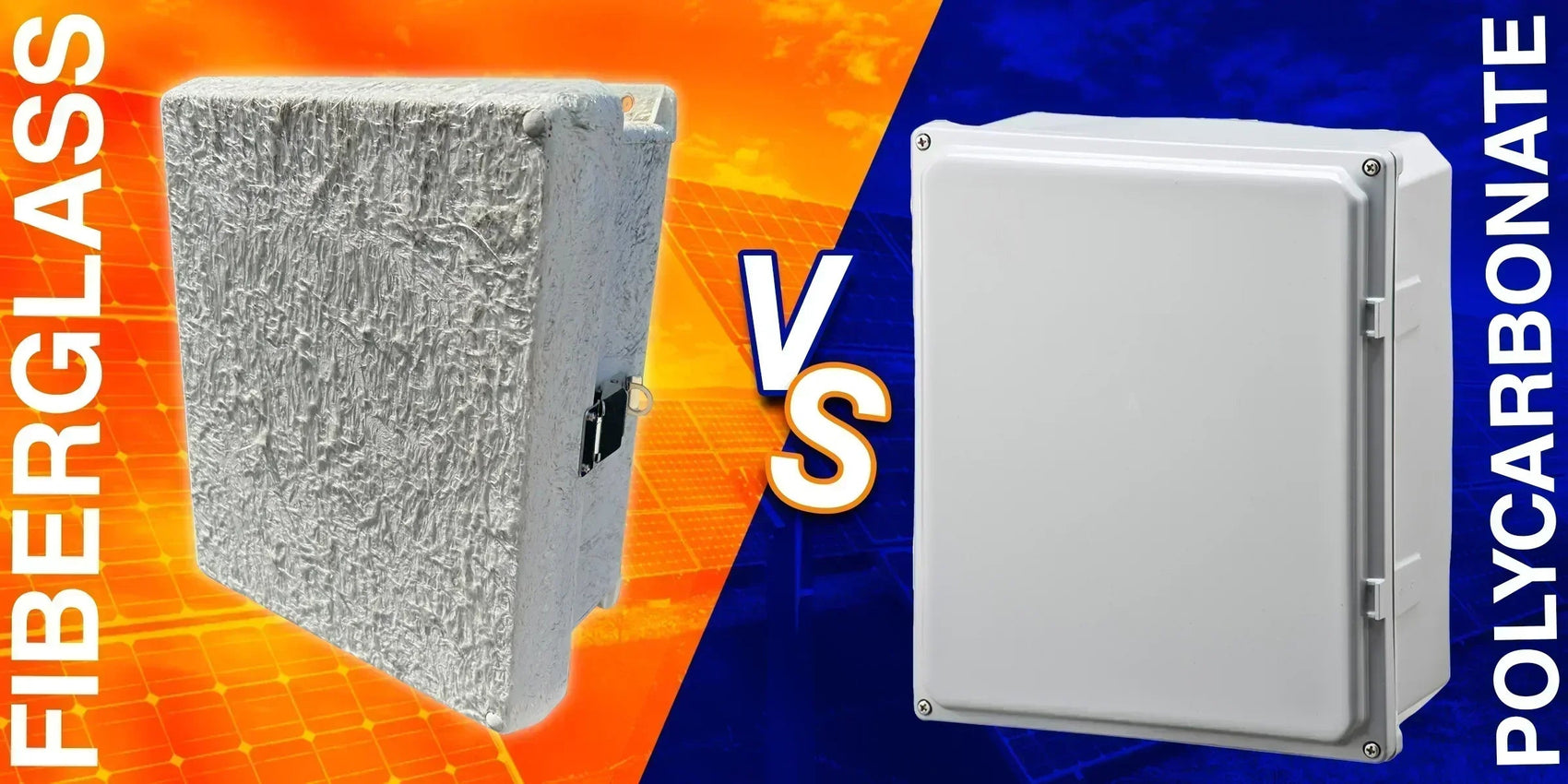When selecting an electrical enclosure, two materials dominate the non-metallic category: polycarbonate and fiberglass. Both are widely trusted for protecting sensitive components from moisture, UV rays, and environmental exposure. However, each material excels in different conditions—and understanding their unique properties can help you make the right decision for your application.
At NEMA Supply, we carry a wide range of both polycarbonate and fiberglass enclosures from top brands like Integra, AttaBox, and Altelix, ensuring you have the right solution no matter your industry.
🔷 Polycarbonate Enclosures
Polycarbonate enclosures are known for their lightweight construction, optical clarity, and impact resistance. Often used in commercial, light industrial, and indoor/outdoor crossover applications, they’re easy to modify and install.
✅ Key Benefits:
-
Impact-Resistant: One of the toughest plastics on the market—resists cracking or breaking on impact.
-
Lightweight: Easier to handle, mount, or transport—especially for pole or wall-mounted installations.
-
Clear Cover Options: Allows visual inspection without opening the enclosure—ideal for monitoring lights or readouts.
-
Machinable: Easier to drill or cut than fiberglass, which reduces installation labor.
🔧 Ideal Applications:
-
Building automation
-
Light-duty outdoor junctions
-
Telecom and data systems
-
Solar installations
-
Utility and metering cabinets
🟫 Fiberglass Enclosures
Fiberglass-reinforced polyester (FRP) enclosures are designed for rugged, high-risk environments. They provide superior protection against chemicals, saltwater, and UV degradation, making them the preferred option for demanding industrial settings.
✅ Key Benefits:
-
Chemical-Resistant: Withstands acids, alkalis, oils, and other corrosive agents.
-
Thermally Stable: Performs reliably in high-heat environments.
-
Long-Term UV Protection: UV-stabilized and weather-hardened to prevent fading, cracking, or weakening.
-
Higher Dielectric Strength: Excellent insulator—ideal for high-voltage or sensitive electronic applications.
🔧 Ideal Applications:
-
Wastewater and sewage treatment facilities
-
Chemical processing plants
-
Coastal and marine installations
-
Industrial manufacturing
-
Mining and energy sectors
📊 Specs to Compare:
| Feature | Polycarbonate | Fiberglass |
|---|---|---|
| Flame Rating | UL 94 5V | UL 94 5V / NEMA 4X / 6P |
| Temperature Range | -40°C to +120°C | -40°C to +140°C (varies by model) |
| UV Resistance | Good (with additives) | Excellent (UV stabilized) |
| Impact Resistance | Excellent | Very Good |
| Chemical Resistance | Moderate | Excellent |
| Weight | Lightweight | Heavier, more rigid |
| Transparency | Clear or opaque options | Opaque only |
🧰 Example Models Available at NEMA Supply
-
Integra Premium Series (Polycarbonate): Available with hinged clear covers, rated NEMA 4X, with excellent visibility and IP protection.
-
AttaBox Heartland Series (Fiberglass): UL 508A certified, heavy-duty fiberglass construction, with opaque covers built for industrial performance.
-
Altelix Outdoor Boxes: Offered in both polycarbonate and fiberglass with integrated mounting options and accessories.
✅ Final Thoughts
Choosing the right enclosure material ensures long-term protection, reduced maintenance, and optimal system performance.
-
Choose polycarbonate when you need impact resistance, visibility, and lightweight handling.
-
Choose fiberglass when you need chemical durability, thermal stability, and UV toughness for outdoor or corrosive environments.
Still unsure which is best for your project? Our experts can help you weigh your application needs and find the best match.
👉 Compare Polycarbonate and Fiberglass Enclosures

